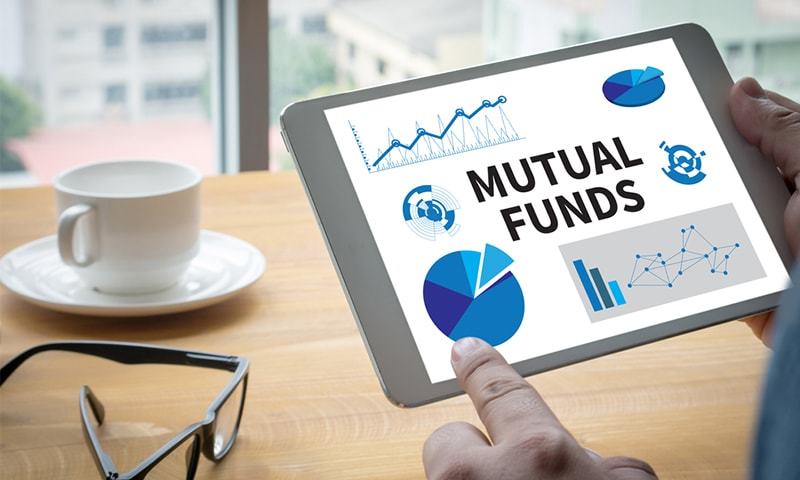
The Ultimate Guide To Investing in Mutual Funds
Oct 13, 2023 By Triston Martin
Mutual funds are a sort of financial vehicle in which the capital contributions of several individuals are pooled. The fund's assets are pooled and invested in a diversified portfolio to achieve the fund's investment objectives. Mutual funds may be divided up into a wide variety of subsets. Some potential investors may feel overwhelmed by the sheer number of items on the market.
Objectives And Acceptable Risks Must Be Determined

Before committing to a particular fund, you should know what you hope to achieve with your investment. Is short-term cash flow more crucial than long-term capital appreciation? There are over 7,500 mutual funds accessible to investors as of May 2022; thus, determining a specific objective is crucial. Think about how comfortable you are with taking risks. It would help to balance your appetite for risk and the rate of return you require.
Different Funds and Designations
Capital growth is the core objective of growth funds. If you're looking to invest for the long haul and can stomach some ups and downs in the market, a long-term capital appreciation fund could be for you. The high proportion of common stocks these funds hold is one reason they are considered high-risk investments.
There is a bigger chance of long-term profit, but the danger is also higher. Holding a mutual fund for at least five years is recommended. Funds that aim at growth or capital appreciation do not distribute dividends. You may want to consider an income fund if you're looking for steady money from your investments.
Charges and Costs

Fees paid by shareholders are the primary source of revenue for mutual fund businesses. When purchasing, it is crucial to learn about the various fees that may be incurred. Loads are sales fees that are applied to some funds. The fee is due at purchase or when the investment is sold. Two load fees are associated with mutual funds: front-end load fees paid at the time of purchase and back-end load fees paid at the time of sale.
Management Styles: Passive vs. Aggressive
Your choice of mutual fund management style—active or passive—is crucial. Portfolio managers of actively managed funds select individual shares and other assets for the fund's holdings.
Managers extensively analyze assets, considering market segments, firm fundamentals, economic trends, and macroeconomic issues. The goal of most active funds is to outperform some indices. Actively managed funds often have greater expenses. According to statistics, the average cost ratio for actively managed funds will be around 0.68% in 2021.
Taking Stock of Management Performance
Researching a fund's performance history is essential before making any investment. So, potential investors should ask themselves the following questions while looking at a fund's past performance:
- Did the fund manager produce market-like returns?
- Does the fund have higher volatility than the major indexes?
- Did investors face significant turnover costs and taxes?
You can see the fund's historical turnover and return trend by looking at the answers to these questions. You can learn about the portfolio manager's performance in different scenarios.
Budget Quantity
When properly managed, a fund's size is typically not a limiting factor in its capacity to achieve its investment goals. Nonetheless, there are situations in which a fund's size becomes unmanageable. The Magellan Fund at Fidelity is a great illustration.
As the fund's assets reached $100 billion in 1999, it had to adjust its investing strategy to keep up with the steady stream of new money pouring in daily. The fund has switched its concentration away from small and mid-cap firms and toward large growth stocks. Hence, output was low.
The Past Seldom Repeats
Notwithstanding the disclaimer that "past performance is no guarantee of future outcomes," while perusing a list of mutual funds for your 401(k), it's hard to look past those who have blown away the competition in recent years. However, the Yale University researchers who conducted the study showed that good and bad-performing funds did not vary significantly in their prospective returns from 1994-2018.
Picking Out the Essentials
Investors would be well to consider issues that affect future performance rather than focusing on the recent past. One of the most respected names in American investing research, Morningstar, Inc., has some useful advice.
The firm has been awarding stars to mutual funds since the 1980s, and these stars are now based on the fund's risk-adjusted performance. Morningstar has updated its mutual fund ranking methodology several times to adapt to shifting conditions in the financial world.
Conclusion
Choosing a mutual fund might be a big endeavor, but the process can become much more manageable with little preparation and awareness of your goals. Success is more likely if this research is done before choosing a fund.
-
 Investment Jul 31, 2024
Investment Jul 31, 2024Groundfloor Investment: Can You Really Achieve 10% Returns?
It provides 10% returns on capital contributions for short-term, high-yield real estate finance, according to Groundfloor US review.
-
 Mortgages Jan 12, 2024
Mortgages Jan 12, 2024Flagstar Bank Mortgage Review: A Comprehensive Guide
Explore Flagstar Mortgage: Loan options, rates, eligibility. Make informed decisions with our comprehensive review.
-
 Investment Jan 03, 2024
Investment Jan 03, 2024The top 5 families of target-date funds
Mutual funds and exchange-traded funds (ETFs) that rebalance their holdings regularly to achieve the best possible risk-adjusted return over a specified time horizon are known as target-date funds. An increasing proportion of a target-date fund's assets will be allocated to less risky investments as the target date draws near. Target-date funds are attractive because they enable investors to consolidate their investment responsibilities into a single, time-tested structure. Typically, the target maturity years for a target date fund are 2035, 2040, and 2045, each representing five years. Target-date funds have had higher expense ratios than other mutual funds, but this trend has reversed in recent years.
-
 Investment Feb 01, 2024
Investment Feb 01, 2024An In-depth Analysis: TruStage Life Insurance Review 2024
Uncover the ins and outs of TruStage Life Insurance, from their policy offerings to customer service, and see how they stack up against the competition.